Professional Football Cheerleading: Redefining art and performance with technology
Available in:
EN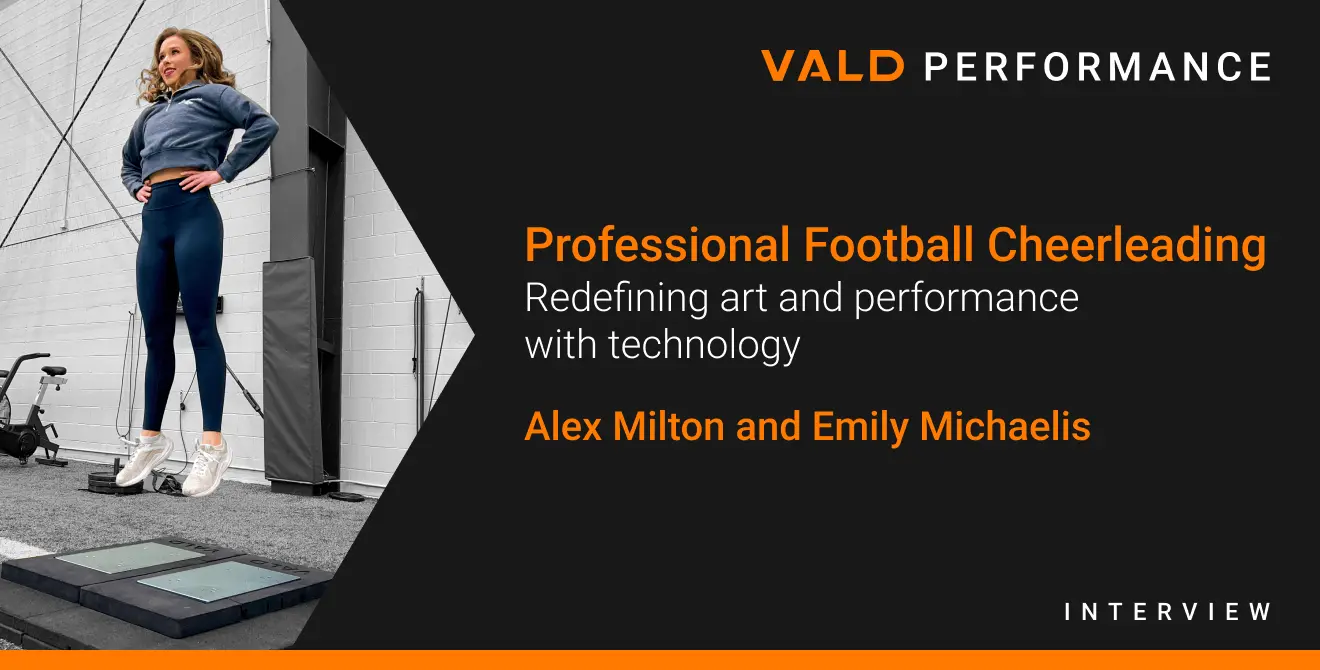
In this Q&A, Alex Milton and Emily Michaelis discuss how a professional football cheerleading performance team integrates technology like ForceDecks into their routines, the challenges they face and how they’re redefining athlete care in cheerleading.
How does your interdisciplinary team help to support this team's cheerleading performance?
Alex: Our team is built on shared knowledge and collaboration. I’m the sports performance coach, Emily Michaelis is the athletic trainer and Zoey Packard, our physical therapist, rounds out the trio.
We overlap in our roles depending on the day, but each of us has a specific expertise we bring to the table. Emily really takes the lead on injury management, while Zoey’s background as a gymnast brings a sport-specific lens to rehab and recovery.
Our day-to-day is all about meeting the athletes' needs through an individualized approach. Cheerleading routines change every game, which means the athletes face new physical demands constantly.
One week, a routine with more tumbling might bring up shoulder issues; another week, it could be lower body stress from landings. Our role is to anticipate these changes and accelerate the athletes’ recovery. Advanced testing technology like ForceDecks helps us track performance to stay ahead of the curve.
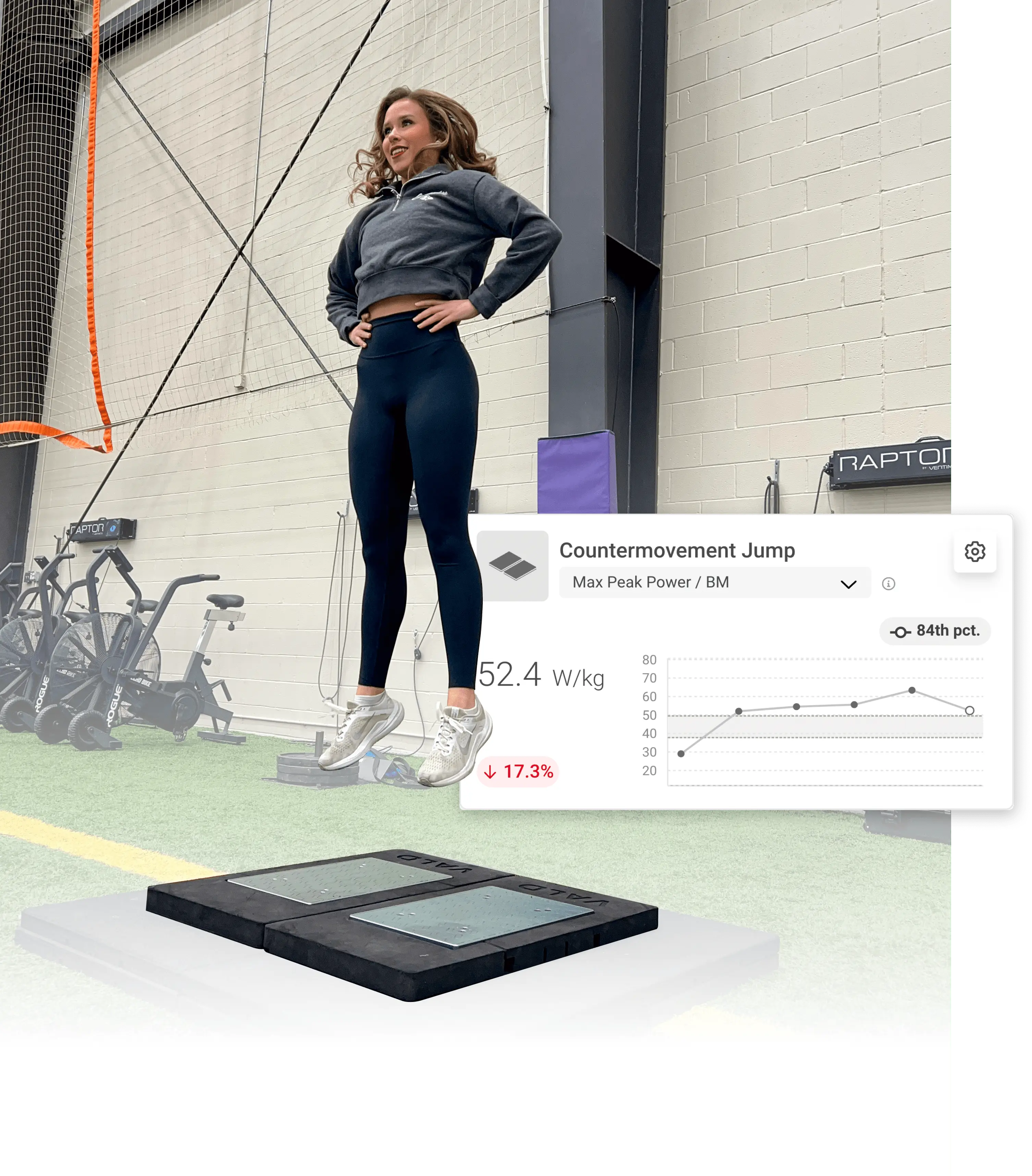
Cheer athlete performing a countermovement jump (CMJ) on ForceDecks.
Emily: On test days, Alex leads the setup and organization for force plate testing while Zoey and I cover pre-practice needs.
Alex: For something like the CMJ, I focus on metrics that provide insights into readiness and injury recovery. Commonly, these metrics are peak power / body mass, eccentric deceleration impulse asymmetry and reactive strength index-modified (RSI-Mod).
…I focus on [assessments] that provide insights into readiness…peak power / body mass, eccentric deceleration impulse asymmetry and RSI-Mod.
The best part of our team setup is how collaborative we are. During practice, all three of us may contribute to rehab for injured athletes, combining our strengths to provide the best care possible.
How do you use technology with the athletes to assist in performance?
Emily: When we first started integrating force plates into our practice, we knew that education on what this technology is, what it can measure and why it’s valuable would bring the athletes and coaches on board.
Cheer and dance athletes aren’t typically familiar with tools like these, so we kept it simple by starting with once-monthly jump tests to help familiarize them with the technology and gain some buy-in from the athletes.
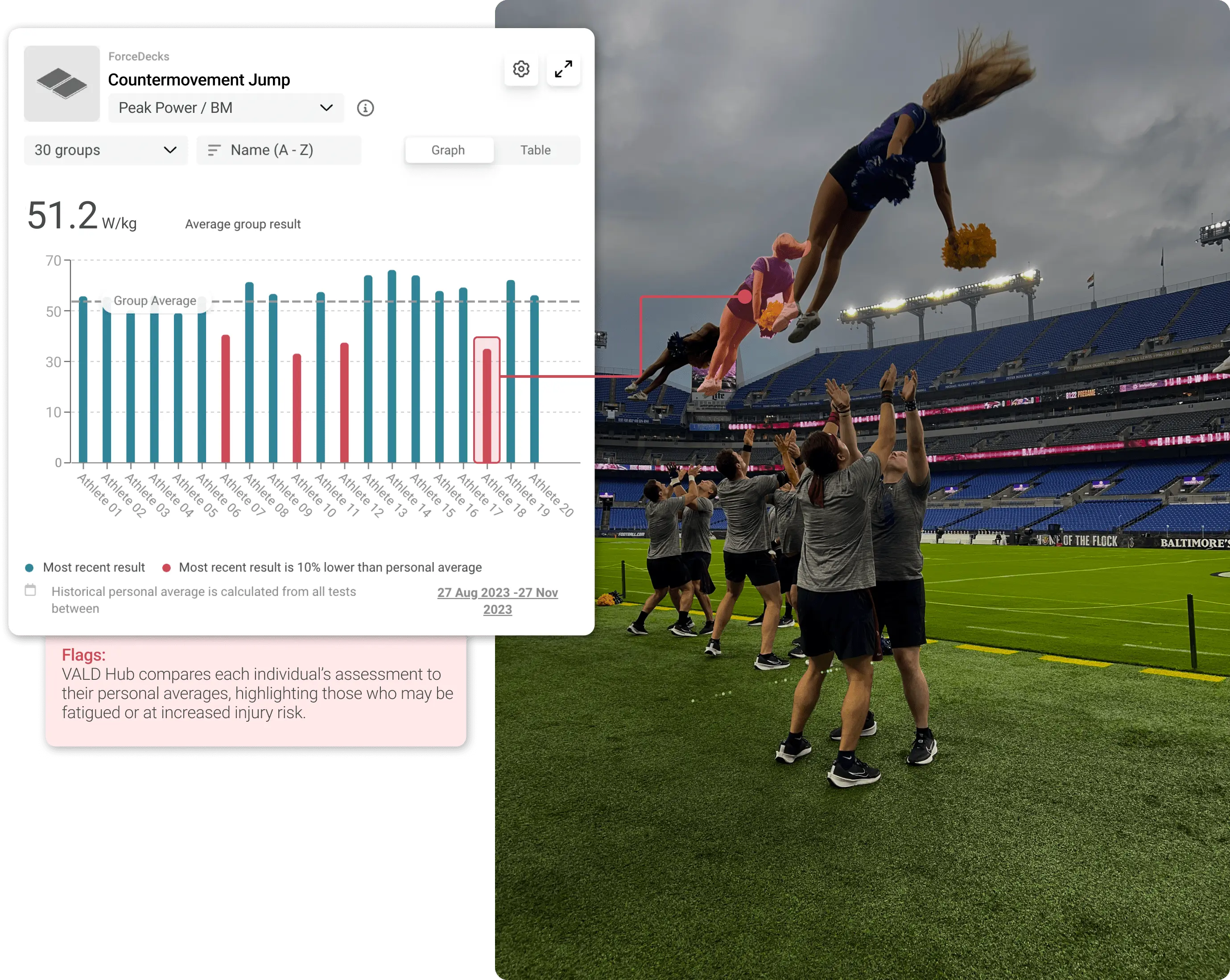
Customizable dashboard presets in VALD Hub showing how flags can help trigger responsiveness to improve athlete performance.
Introducing tools like ForceDecks has allowed us to focus the conversation on functional performance outcomes instead of aesthetics. That’s been a game-changer in helping the athletes see themselves as athletes – not just performers. The biggest win here has been shifting the narrative around testing.
[ForceDecks] focus the conversation on functional performance outcomes instead of aesthetics …helping the athletes see themselves as athletes – not just performers.
Alex: ForceDecks has helped create a culture of trust and communication. Jump testing gives us objective data, like asymmetries or performance changes, that we can bring to the athletes as a conversation starter.
It’s less about pointing out weaknesses and more about showing them we’re paying attention and care about their long-term health and performance.
ForceDecks has helped create a culture of trust and communication …less about pointing out weaknesses and more about showing them we’re paying attention and care about their long-term performance.
What tests have you found to be most helpful to track the athletes?
Alex: Right now, we’re keeping it simple. With over 50 athletes, three practitioners and one set of force plates, efficiency is key. We do three CMJs per athlete and send them back to practice.
Testing sessions are as controlled as possible. By keeping a sterile testing environment, such as keeping testing sessions at the same facility, on the same surface, with the same cues and assessors, we can better ensure clean, reliable data is collected.
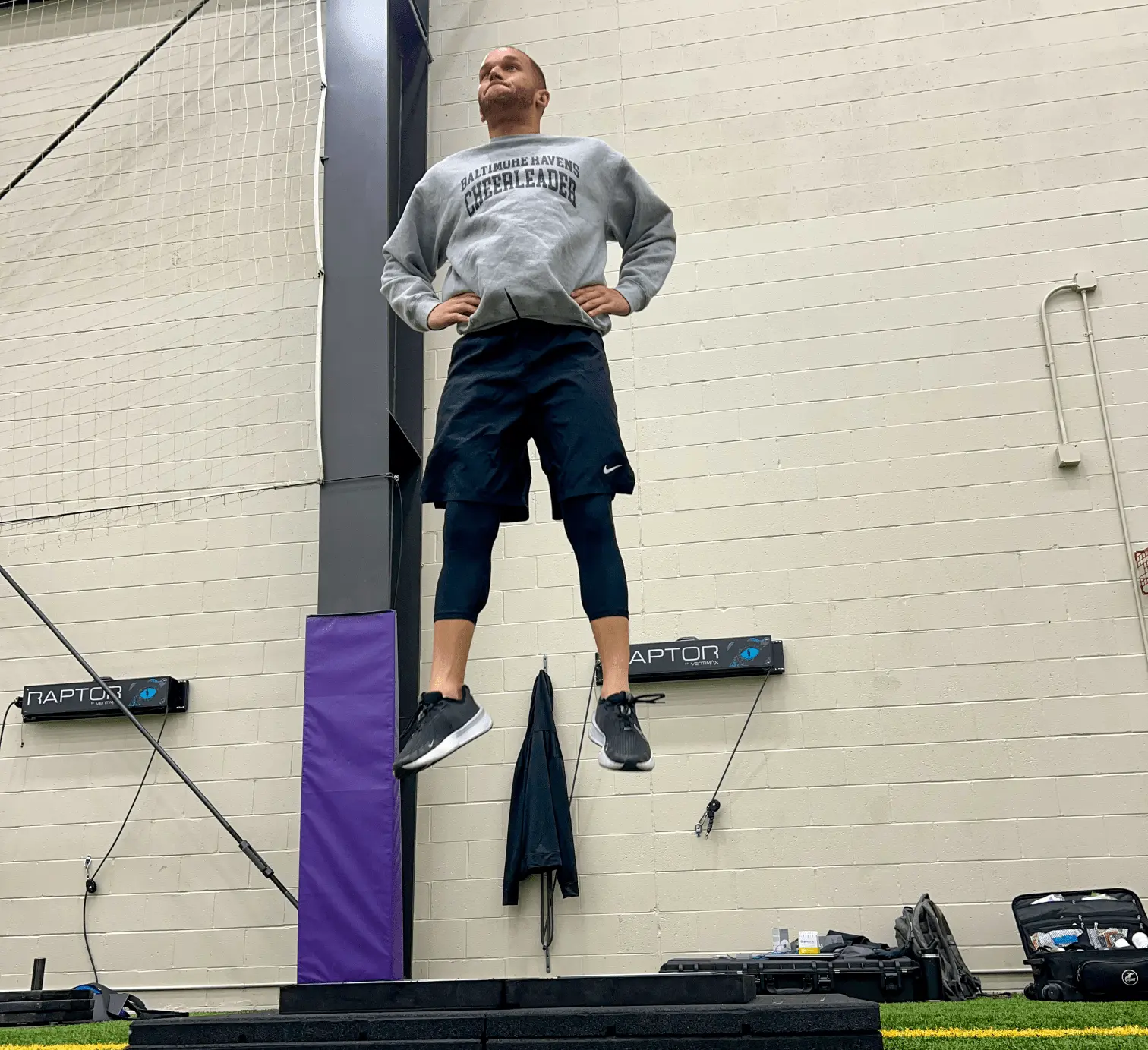
Cheer athlete performing a CMJ on ForceDecks.
Emily: We’ve also made sure the data collection process is non-intrusive. These athletes have busy lives – many have full-time jobs and families – so our goal is to make testing quick and easy.
Even though we’re starting small, we’re excited to expand testing over time, likely adding more assessments and post-season reviews.
Are there certain metrics you specifically monitor?
Alex: We primarily track peak power and eccentric deceleration impulse because these directly tie into the demands of their routines.
For example, we’ve seen how tracking peak power / body mass can help validate training progress. Significant asymmetries in deceleration can prompt us to dig deeper into an athlete’s movement patterns and routines or corroborate objective data with athlete reports of pain and soreness.
Force-time (grey, blue and orange) and power-time (green) traces visualizing the two metrics assessed by the cheer performance team.
Emily: Sometimes the asymmetries we see aren’t actual issues but rather adaptations to asymmetrical routines. Instead, we like to track the trends and changes in the asymmetries that our athletes have over time rather than chasing perfect symmetry for everything they do.
Cheerleading often involves highly specialized movements, so understanding the context of the data is just as important as the numbers themselves.
[We look at] trends and changes in asymmetries that our athletes have over time rather than chasing perfect symmetry for everything they do.
What is the difference you notice between cheer athletes and more “typical” team-sport players (e.g., football)?
Alex: Cheer athletes are some of the most self-sufficient people I’ve worked with. Many grew up in environments with limited resources, so they’re used to managing their own warmups, taping their own ankles and pushing through injuries.
However, this independence also means they may underreport pain or injuries, which can be a challenge.
It’s interesting because we see similar issues to those observed in other sports, such as underreporting injuries, long training hours and highly dedicated athletes, but the reasoning behind these issues differs vastly compared to something like football.
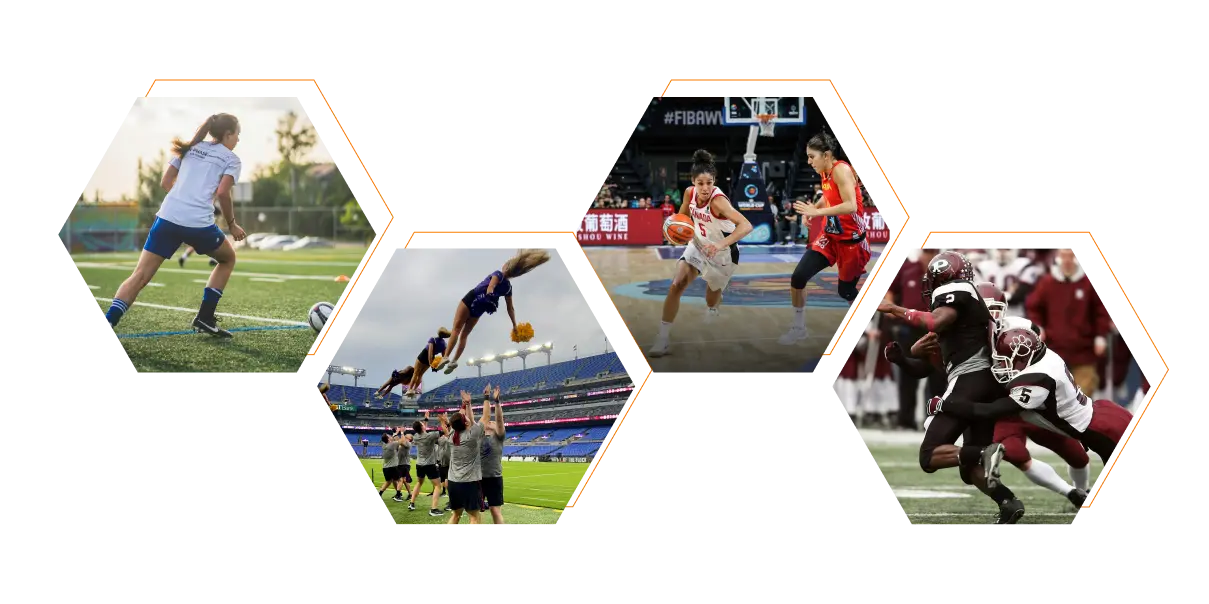
Emily: Cheerleaders have often been in dance, cheer or performing arts their entire lives and haven’t experienced the training, testing and recovery strategies that are typified in traditional team sports. With technology like ForceDecks integrated into our team dynamic, we’re able to reframe that perspective.
What other roles has technology helped with when working with these athletes?
Emily: ForceDecks have been a fantastic tool for broadening the conversation around weight and performance.
For example, we’ve shown athletes that weight gain doesn’t necessarily mean reduced performance – sometimes, it’s the opposite. Seeing improvements in metrics like jump height helps them focus on what really matters.
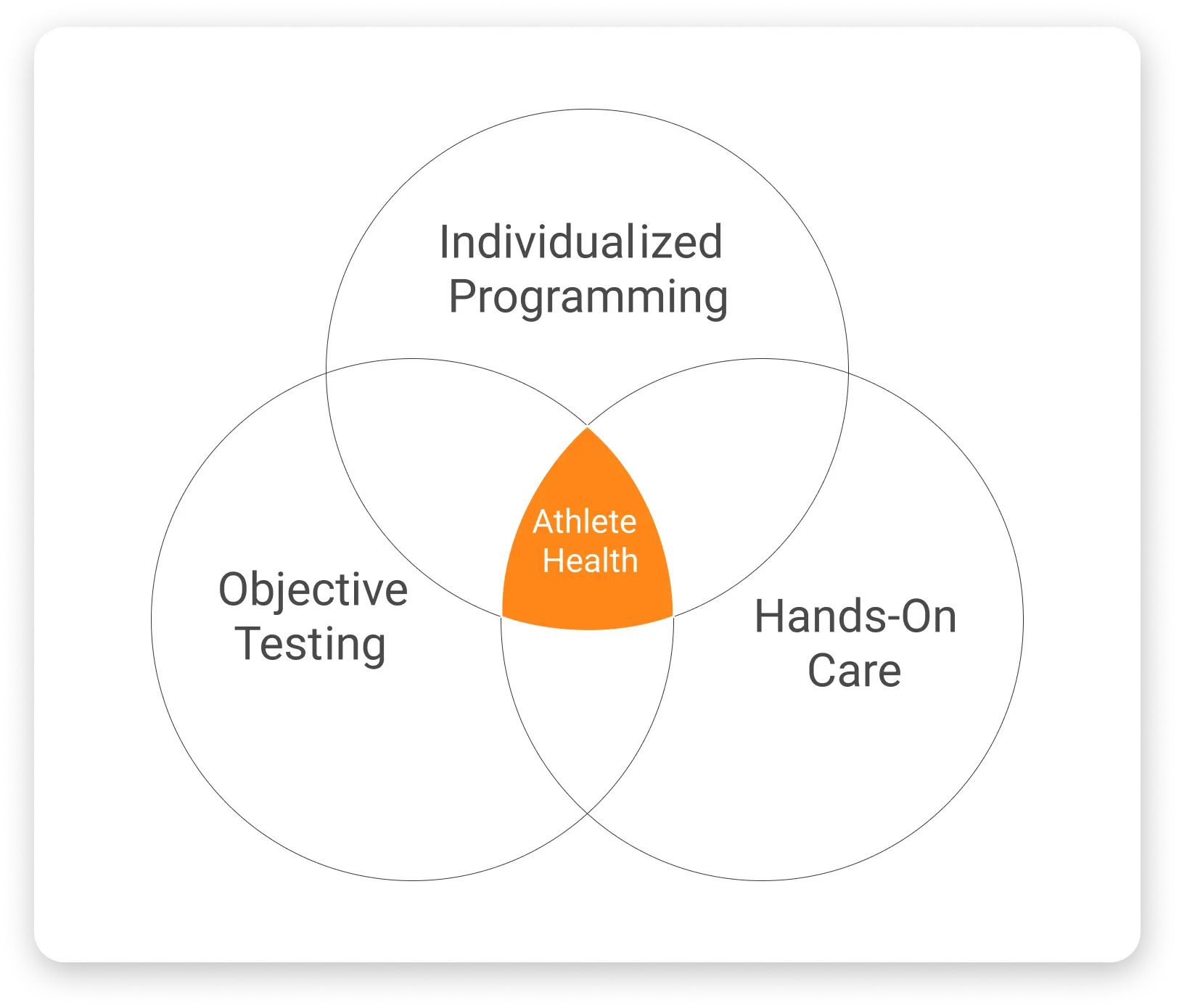
Alex: It’s also been great for opening conversations about wellness. If someone’s performance dips, we use that as an opportunity to check in about things like sleep, nutrition or stress.
Technology isn’t just about data – it’s about what that data allows us to explore with the athletes.
…we use [ForceDecks results] to check in about things like sleep, nutrition or stress. Technology isn’t just about data – it’s about what that data allows us to explore with the athletes.
Is there anything you’re particularly excited about in terms of future technology integration?
Emily: This is only our first year using ForceDecks, so I’m excited to build on this foundation.
Eventually, we’d love to introduce a full battery of tests, adding isometrics, upper body and functional tests, and track athletes through multiple seasons. That would help give us a clearer picture of how we expect training and recovery to change throughout the football (and, therefore, cheer) season.
Alex: I’m also looking forward to continuing to highlight the physical toll of cheerleading. It’s such a demanding sport, but it often flies under the radar. By using technology, we can bring more visibility to these athletes and give them the support they deserve.
Stay tuned for more insights on how performance teams are transforming athlete care and performance with cutting-edge technology!
If you would like to know more about how to integrate VALD’s human measurement technology to support recovery and improve athlete performance within your organization, please reach out here.
